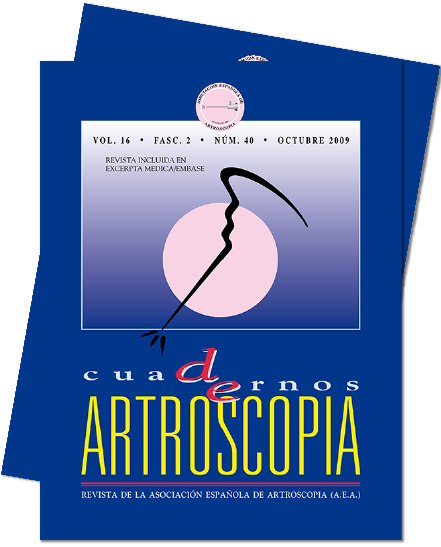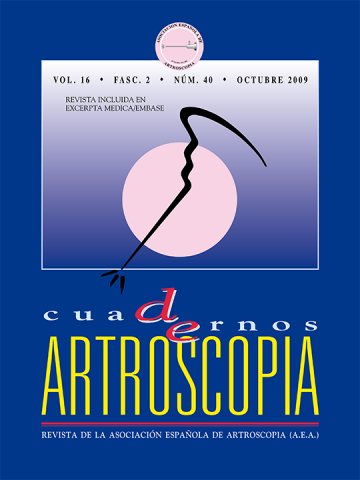Resumen:
Aunque las indicaciones para la misma la reparación meniscal externa están bien establecidas, algunos aspectos son todavía materia de controversia. Clásicamente, se ha recomendado evitar cruzar con suturas el tendón poplíteo, aunque en ocasiones es difícil evitalo. El objetivo principal de este trabajo fue valorar la viabilidad de una reparación meniscal que incluyera el tendón poplíteo. Para ello se utilizaron 6 rodillas humanas congeladas, en las que se creó una lesión longitudinal en asa de cubo del menisco externo. La rodillas se dividieron en tres grupos: grupo A (control), en el que se realizó una reparación meniscal con 5 puntos verticales dos posteriores y tres anteriores al hiato poplíteo; grupo B, al que se añadía un punto de sutura entre el menisco externo y el tendón poplíteo, y grupo C, en el que el punto de sutura adicional incluía menisco, tendón poplíteo y cápsula articular. En todos los casos se realizó una osteotomía lateral del cóndilo externo para acceder al compartimento externo de la rodilla. Después de la fijación de la osteotomía, las rodillas fueron sometidas a 1.000 ciclos de marcha, mediante un simulador experimental de marcha. Posteriormente, se realizó una valoración macroscópica de la reparación meniscal y del tendón poplíteo. No se observaron diferencias en cuanto a la situación previa en ninguno de los tres grupos. Conclusión: en este sumodelo experimental, la reparación del menisco lateral incluyendo el tendón poplíteo no parece tener ninguna repercusión sobre la viabilidad de la sutura.
Abstract:
Even though the indications for lateral meniscus repair are well established, some aspects remain controversial. It has been classically recommended to avoid sutures crossing the popliteal tendon, though this is at times difficult to achieve. The prime aim of the present study has been to assess the viability of a meniscal repair technique including the popliteal tendon. Six frozen human knees were used in which a longitudinal bucket-handle lesion was created in the lateral meniscus. The knees were divided into three groups: in group A (control), a meniscal repair was carried out with five suture points, two of them posterior and three anterior to the popliteal hiatus; in group B, one further suture point was added between the lateral meniscus ald the popliteal tendon, and in group C the additional suture point included the meniscus, the popliteal tendon and the articular capsule. In all cases a lateral osteotomy of the external condyle was performed for access to the external compartment of the knee. After fixation of the osteotomy, all knees underwent 1,000 gait cycles in an experimental gait simulator; a macroscopic assessment of the meniscal repair and of the popliteal tendon was then performed. No differences were observed as compared to the initial situation in any of the three groups. Conclusion: In this experimental model, lateral meniscus repair including the popliteal tendon does not appear to have any bearing on the viability of the suture.




